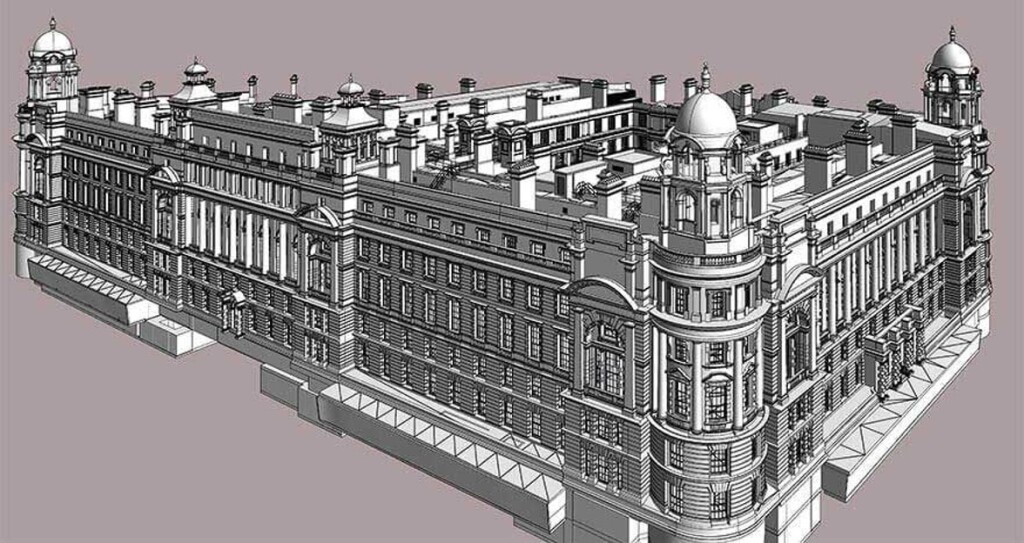Contributed by Bhushan Avsatthi – Director of BIM at HitechDigital
Background
In 2014, a surveying and BIM services firm from Manchester, UK, took on a new project for renovation, maintenance, and facilities management of a 16th century heritage building.
The project required 3D Point Cloud to BIM modeling of the building to create a digital replica preserving its signature architecture. This building information model in 3D was to carry information of all as-built conditions. The monument was laser scanned, generating 3D survey measurements and high-resolution survey images.
Challenges: Creating the 3D model of such a large area within a couple of months
This is of the largest and most grandiose 16th century monuments in the UK, spread across an area of 580,000 sq. ft. (13.3150 acres) with intricate architectural features. Its huge size and irregular geometric complexity made it challenging to scan the entire area including rooftops and roof components.
The monument was laser scanned with every detail including survey measurements and survey photos. Preserving architectural prominence was a challenge for Point Cloud to BIM professionals, along with maintaining high-quality detailing at LOD 400. The 200GB of point cloud data that was generated posed another challenge in processing it into a single BIM model.
Solution: HitechDigital handles the Scan to BIM conversion
The laser scanning services provider contacted HitechDigital for Scan to BIM conversion based on scan data. A 3D BIM model in Revit at LOD 400 was created by validating geometric details and creating Revit families for components. Detailed documentation of the building elements was extracted from the Point Cloud to BIM model including carvings, rooftops, roof components, timber structures, and other building elements.
What was HitechDigital’s approach to achieving project success?
HitechDigital has been at the forefront in using advanced BIM processes and tools for large projects including Point Cloud to BIM. Latest Point Cloud to BIM modeling tools were used to create a model in 3D space for teams and key personnel to process and understand. Based on the sheer size of the scan data, the analysis had to be thorough for size complexities, geometries, curves, planes, and extrusions.
“The project was a stepping stone to the next level of the BIM model and architects at HitechDigital assisted us in completing the project. They helped us became a part of the prestigious restoration project of international importance.”
Using Revit, the scans were converted into a 3D BIM model, wherein building components were modeled based on cross-sections, assignment of appropriate levels, and Revit family creation. All of these were parametric. Scans were again used to generate a component library that would help in developing various building structures.
The use of Revit families within BIM projects has been significant within a myriad of projects. Revit families showcase high levels of component customization, dimensional accuracy, and impressive 3D modeling to list a few. HitechDigital was able to model an exhaustive set of Revit families for carvings, roof components, rooftops, timber structures, and other building elements with a three-dimensional view.
After architectural elements were modeled, the team moved on to create structural elements including beams, columns, joists, bolts, etc. These elements were integrated with the final as-built model. Demanding QA/QC workflows, checklists, and Revit API plugins were used to check errors in model geometry for the final deliverables to be geometrically precise.
What were the deliverables?
A Revit Scan to BIM model at LOD 400 of the 16th century heritage building. Detailed documentation of building components was also created for maintenance and Facilities Management.

Business Impact/Achievements
By using Scan to BIM modelling the renovation project received a comprehensive digitized and documented version of the heritage structure. They were able to renovate the structure successfully.
The final 3D model supported the renovation at various levels for accurate material consumption, reduction in manpower costs, and greater accuracy in renovation timelines. The model was also used for future maintenance and facility management.






